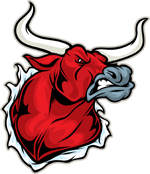We all know what it’s like to be Bossy. You give your “bossy” orders, usually using a very loud voice and then hope that the job will get done. Super Bosses, on the other hand, run their dairy operations without resorting to being the loudest in the room … and amazingly… everything runs smoothly, and when there are problems, they are handled efficiently. As with any other worthwhile achievement, it takes time. Long before you can build a super-dairy you have to channel your inner super boss and get rid of your cow bossy side.
In the offices of The Bullvine, we have combined experiences of working with eighteen different bosses and all three of us have been “the” boss ourselves. The challenge we share with dairy teams everywhere is knowing the difference between being bossy and being a super boss. Let’s compare and contrast the differences between the two, when applied to running a dairy operation.
- COW BOSSY Hires a CLONE.
A SUPER BOSS Hires the MISSING piece.
It goes without saying that a Super Boss must have employees. In choosing employees, Super Bosses do two things especially well. First off they look to hire people who are good at the things they themselves are weak at. You don’t need a team that has only one major matching strength. An exceptional team covers all the abilities the job requires and each one is exceptional in bridging knowledge or experience gaps that you or others don’t - COW BOSSY Saves money with LOW salaries and CUTTING corners
A SUPER BOSS is Not stingy in PAYING for value and SPENDING to make money.
Super Bosses recognize the importance of paying top dollar for top talent. Matching the right compensation with the right employee is a Super Boss skill. When your staff knows that you recognize their abilities and appreciate them, you are laying the foundation for an efficient People who feel valued are committed to doing their best on the job. Super Bosses are not stingy when it comes to recognizing consistent and valued contributions. Your team is the first line that suppliers, consultants and clients meet. You want a team that works well and gives a good impression even when you’re not there. - COW BOSSY Sees no REASON to learn more.
A SUPER BOSS Never STOPS Learning
As leaders in an industry that is constantly changing and evolving, dairy super bosses know that they can never stop learning and finding better ways to run their operations. A super boss is not afraid to try something new, even if their current methods are working. Super bosses are comfortable with continually striving to improve. A successful dairy is never finished evolving. Super Dairy Bosses have an outstanding ability to know what’s important and how to use new learning and training to keep everyone responding effectively to present and future challenges - COW BOSSY Shrouds Success in MYSTERY
A SUPER BOSS sets the EXAMPLE for HIGH achievement
The goal of a Super Boss is to build confidence. Bossy bosses more often find their security when their employees are never exactly sure where the benchmark is set on any given day beyond the fact that the staff is probably falling below expectations. Bossy leaders live by the mantra, “It’s my way or the highway!” On the other hand, Super Bosses instill staff with the tools, instructions and intense feedback that keeps them striving to do better, not only for themselves but the dairy. The dairy team doesn’t fear retribution for failure because they are led by the example of the Super Boss. Super Boss teams often achieve results that were thought to be impossible. - COW BOSSY Likes the STATUS QUO AND WON’T ROCK THE BOAT
A SUPER BOSS is committed to CONTINUOUS IMPROVEMENT
Even though we want to succeed, there is always the temptation to settle for “good enough”. It’s easier to wear a boss hat if you don’t have to guide your team through tough changes. Bossy leaders like the title of Boss and protect themselves from situations that acknowledge that problems exist. They actually fight against anything that could make them look bad. When problems arise, they respond defensively and try to prove that everything is okay. Rather than work through the difficulty, they put up DETOUR signs. Super Bosses are all about the movement of the dairy operation from good to better to best. They know that you can’t fix what you don’t acknowledge to be broken, so they use problems as signposts to building a better dairy. Success comes from knowing the operation so well that there is always room for improvement. Even if the journey hits a few rough patches, they are willing to keep going. - COW BOSSY is always PLAYING CATCH-UP
A SUPER BOSS FACES the future
Crisis management, while it may be good for an adrenaline rush, is not the way to manage a successful dairy. Letting nature take its course decreases the need for planning but drastically increases the likelihood of problems. A Super Boss plans for future. Some bosses wear their ability to manage a crisis as a badge of honor never realizing that if they had planned ahead, they may have avoided the crisis altogether. If you’re always running to catch-up, you never get far enough ahead of the situation to feel a sense of calmness as you face the future. Why would anyone allow rising young heifer mortality rates to continue before making changes to nutrition program? Why wait until your dairy is in the red to implement financially responsible changes? As the world leaps ahead in technology are you moving with it? Are you training yourself and your employees to be mainstream or struggling to keep your head above water? Do you and the staff or employees share a vision for the future? Is there a clear path? It takes training, commitment, planning and daily adjustments to build a super dairy. - COW BOSSY KEEPS SUCCESS UNDER WRAPS
SUPER BOSSES Grant access to their dairy experts, mentors and peers/advisors
It is one of the curiosities of life that cow bossies who manage by intimidation are themselves frightened by the successes of their employees. Rather than seeing the benefits for the dairy, they may feel threatened and start staking out their territory in an effort to keep employees in their place. Employees who interact with consultants or dairy peers tend to make cow bossy bosses feel threatened or territorial. On the other hand, Super Bosses make the introductions and encourage employees to expand their knowledge and skills through interacting with those who are proficient or even experts in their fields. Super Bosses see the industry as a vast resource for improvement. They take every opportunity to personally introduce their team to individuals who can make a positive impact on their knowledge and dairy skills. They are not afraid of being surpassed or cut out. They know that there is always more room at the top. That is the way Super-Bosses build Super-Dairies. - COW BOSSY COMPETES WITH EVERY STAFF PERSON
SUPER BOSSES GROW NEW SUPERBOSSES
The difference between being bossy and being a Super Boss has a lot to do with where you put your energy. Bossy spends most of their energy giving orders and trying to keep their employees in the box they have assigned to them. Super bosses, in contrast, spend their time and energy finding the right people. They look for creativity and confidence in finding new ways to handle problems and excel at their work. They feel it is natural that talented people will continue to rise to the top. Career changes are not seen as threatening but as a confirmation that skills and training are achieving the right results. Employees who rise to a new position are not cut off or deemed threatening. The same interest that got them their promotion is seen as a resource to be maintained and perhaps drawn from in the future. The bossy boss is threatened by peers rising to their level. Super bosses find it to be a natural and rewarding outcome of selecting and nurturing talented leaders. - COW Bossy is Hands OFF.
SUPER BOSS IS Hands-on
The Bossy dairy manager is distant from the daily grind of 24/7 problem solving. They manage from crisis to crisis. A dairy super boss doesn’t fear what’s going to go wrong because they are working and communicating with staff to a level that keeps all parties engaged. While Bossy bosses point out the shortcomings when something misses the mark, Super Bosses don’t need to be brought up to speed. They have the people and processes in place that they not only know how things are going but can work alongside the team as needed.
THE BULLVINE BOTTOM LINE
It is hard to be a boss. Many people don’t want to have one. Having said that, all of us want to follow a good leader, and we know that dairy operations succeed or fail based on the quality of the people in charge. Super Bosses stop thinking about what their people could do for them and started thinking about what they could do to help their people succeed. Inspire. Teach. Remove obstacles. Be human. If you cultivate these characteristics, you’ll become the Super Dairy Boss that your people will remember for the rest of their careers.

Get original “Bullvine” content sent straight to your email inbox for free.





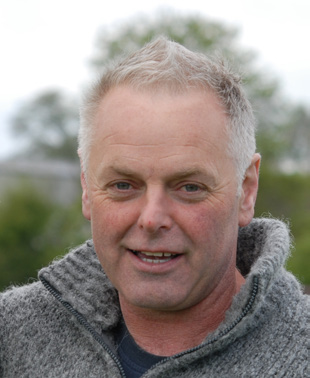
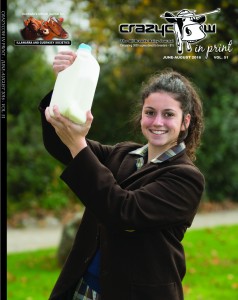
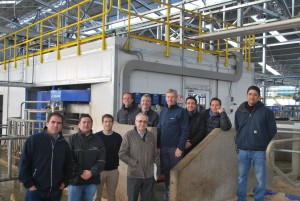 Fundo El Risquillo, a large farm in Chile with 6500 dairy cows, has just signed an agreement to install 64 DeLaval VMS™ milking robots making it the world’s largest robotic milking farm.
Fundo El Risquillo, a large farm in Chile with 6500 dairy cows, has just signed an agreement to install 64 DeLaval VMS™ milking robots making it the world’s largest robotic milking farm.
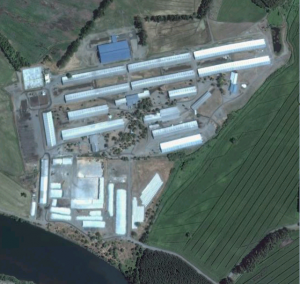 When the new installation is complete, 4,500 cows will be milked robotically while one rotary will remain for fresh and special needs cows. There are currently four rotaries in operation today. While many farmers see DeLaval VMS™ as a robot for a smaller operation, CEO Pedro Heller calculated easily after the first installation that there was a clear return on investment together with the other cow comfort solutions.
When the new installation is complete, 4,500 cows will be milked robotically while one rotary will remain for fresh and special needs cows. There are currently four rotaries in operation today. While many farmers see DeLaval VMS™ as a robot for a smaller operation, CEO Pedro Heller calculated easily after the first installation that there was a clear return on investment together with the other cow comfort solutions.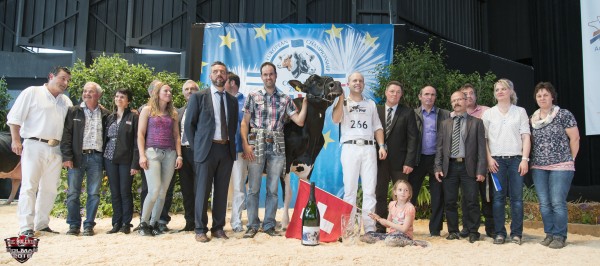
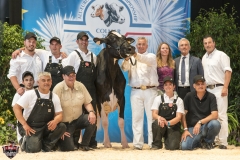
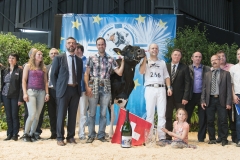
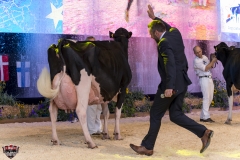
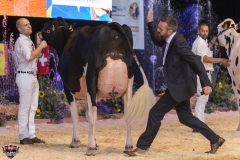
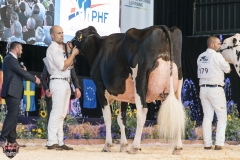
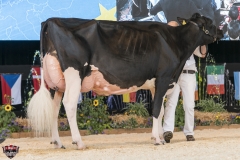
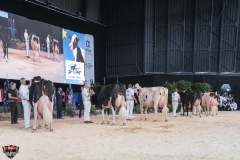
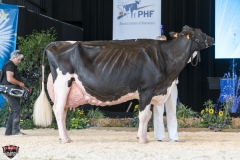
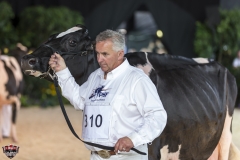
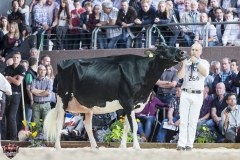
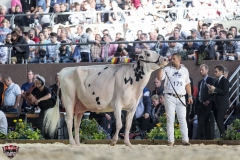
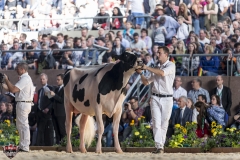
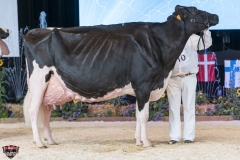
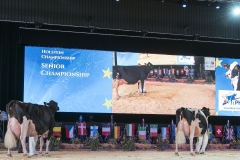
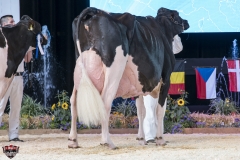
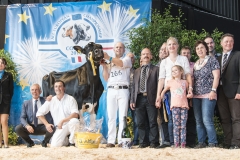
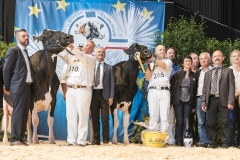
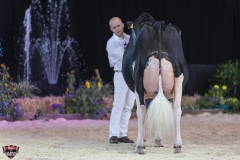
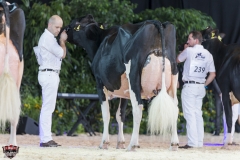
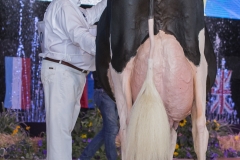
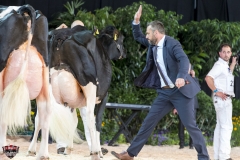
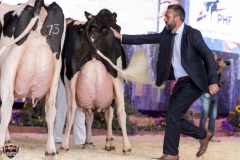
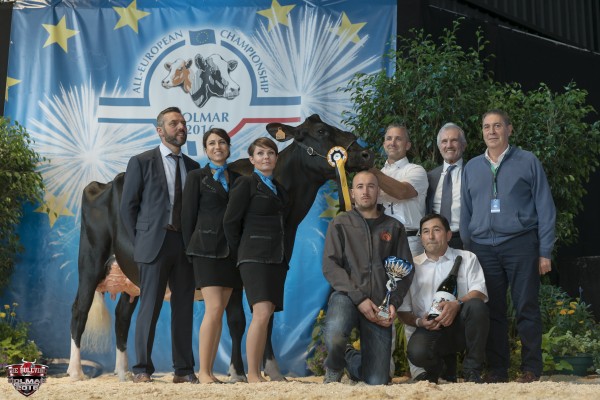
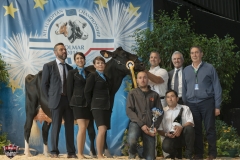
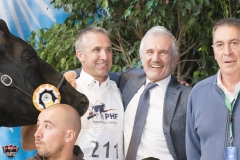
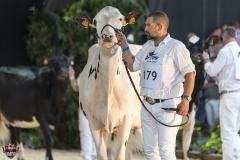
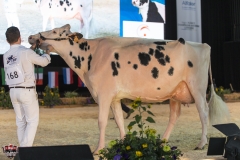
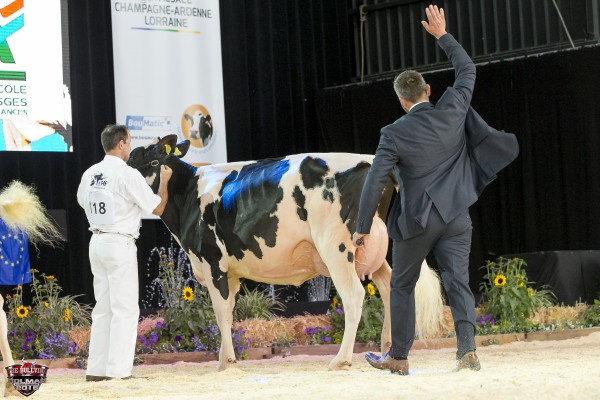
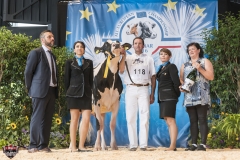
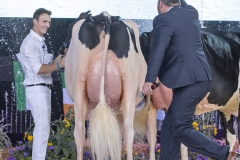
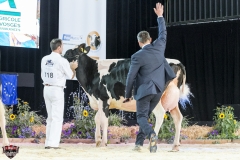
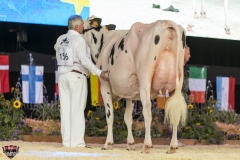
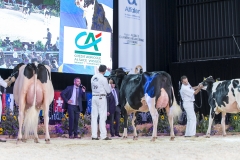
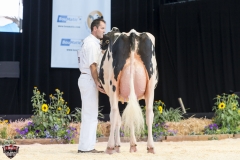
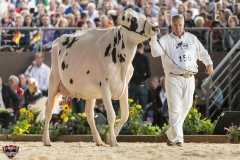
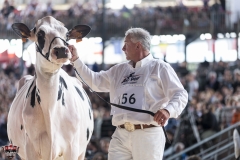
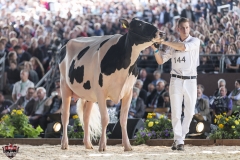
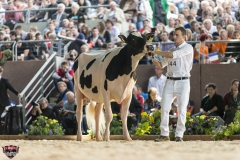

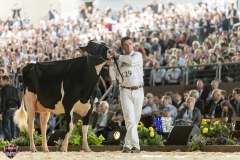
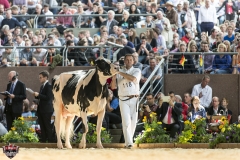
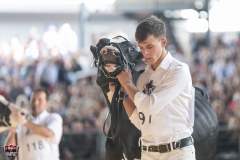
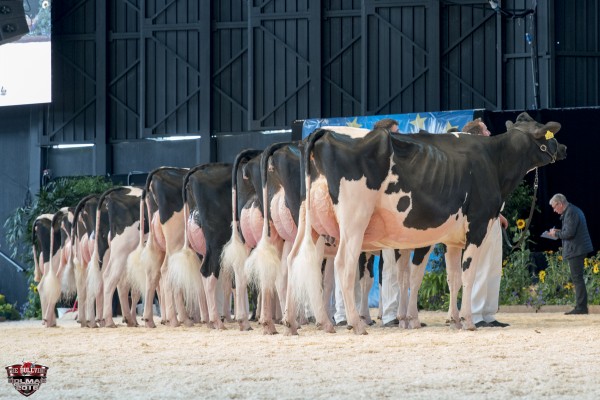
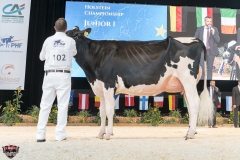
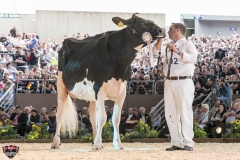
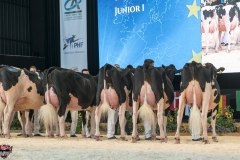
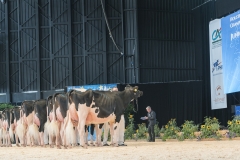
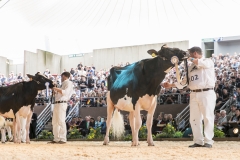
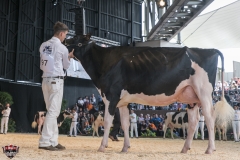
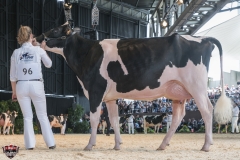
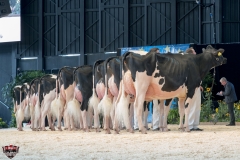
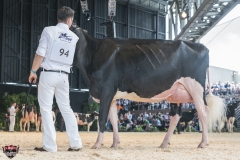
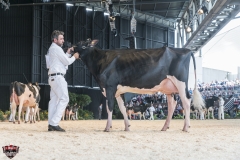
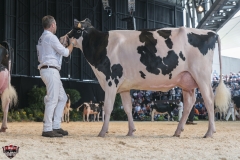
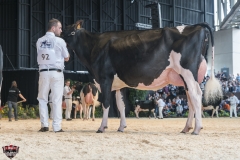
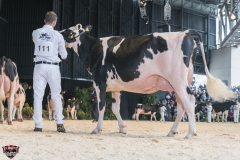
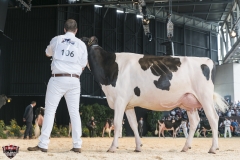
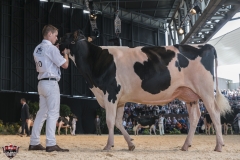
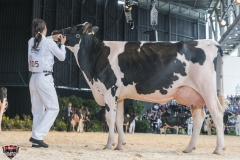
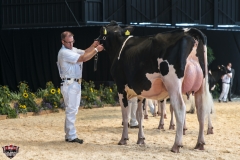
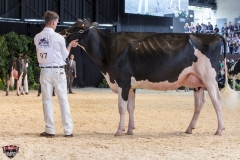
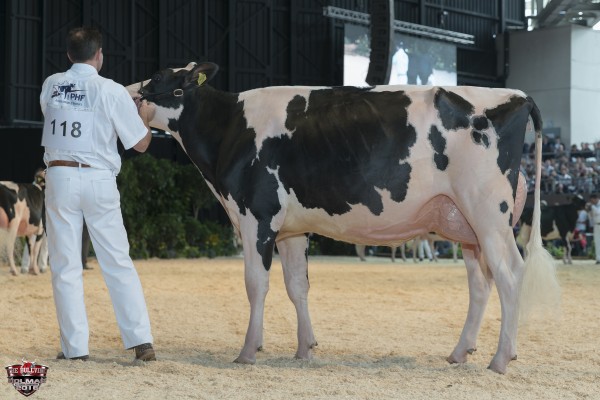
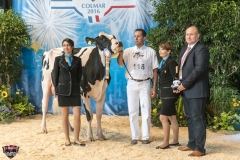
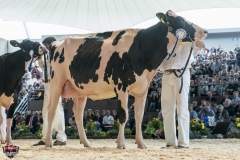
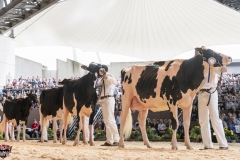
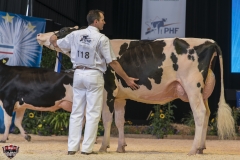
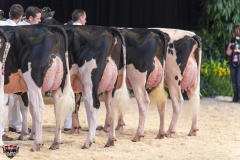
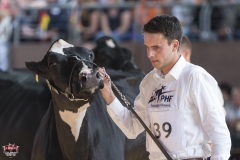
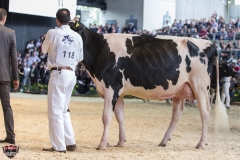
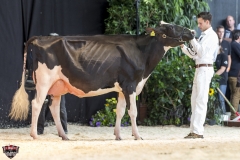
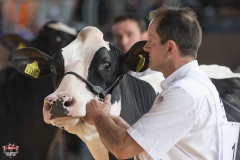
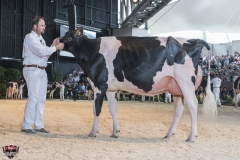
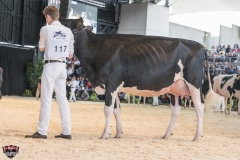
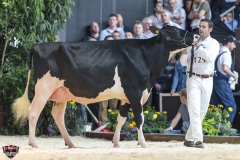
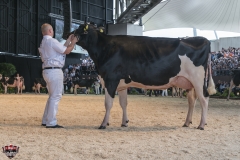
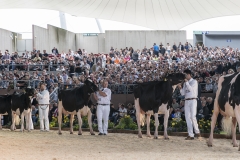
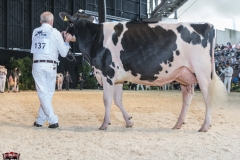
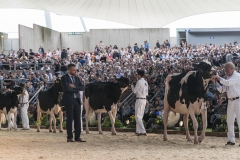
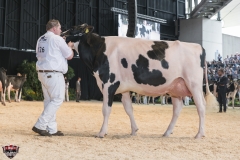
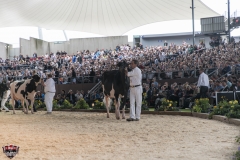
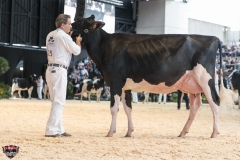
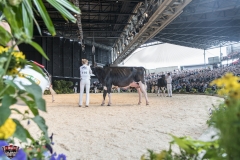
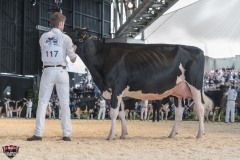
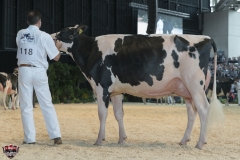
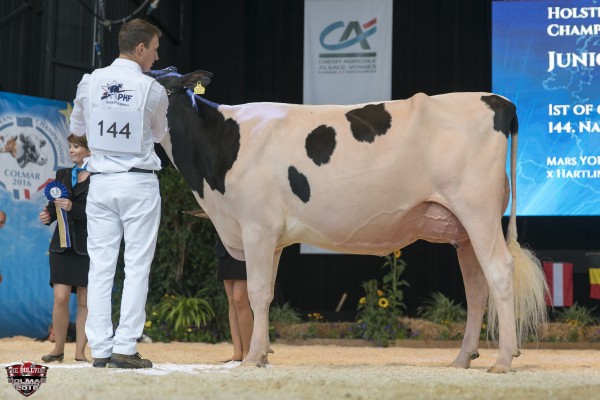
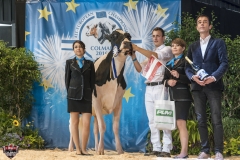
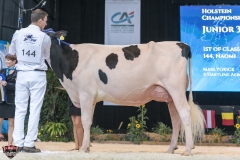
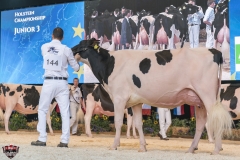
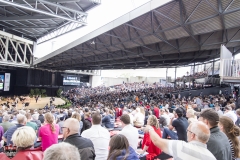
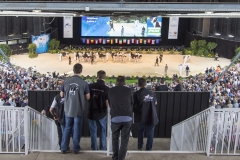
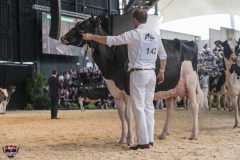
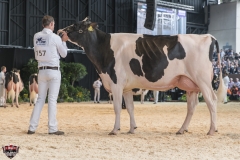
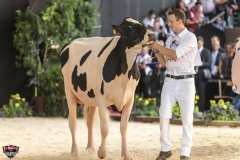
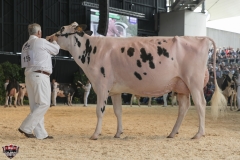
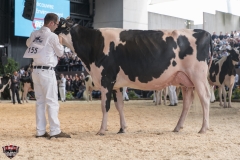
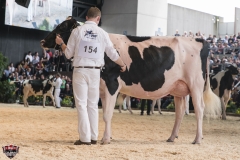
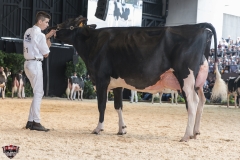
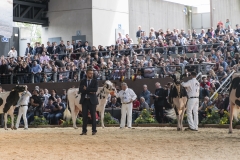
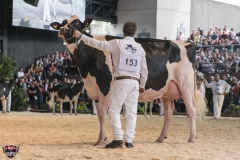
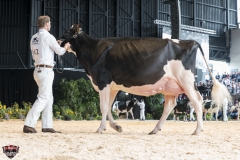
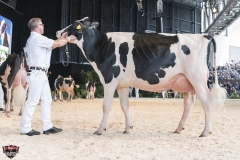
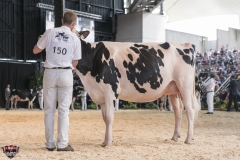
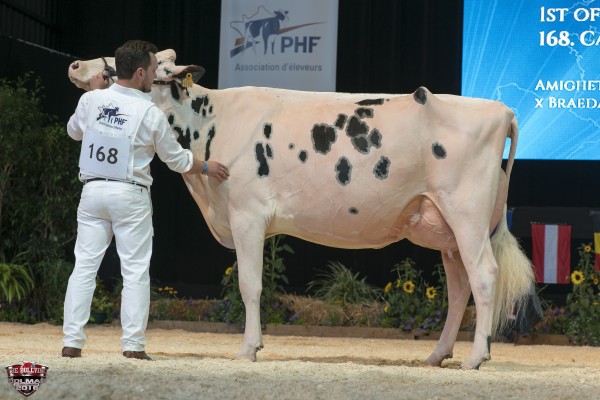
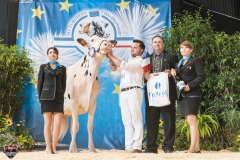
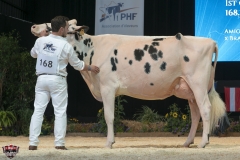
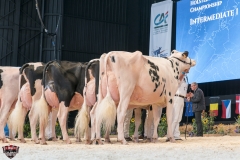
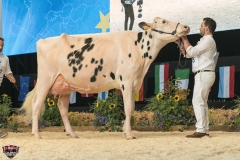
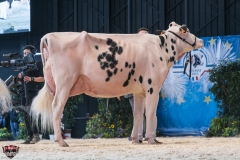
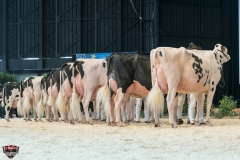
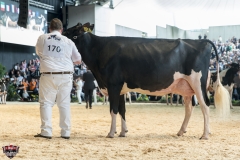
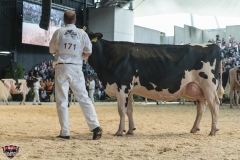
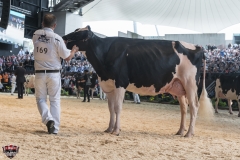
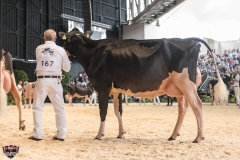
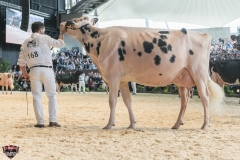
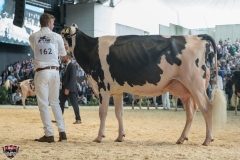
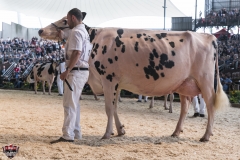
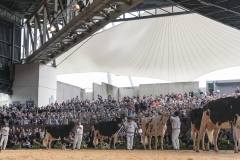
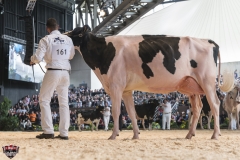
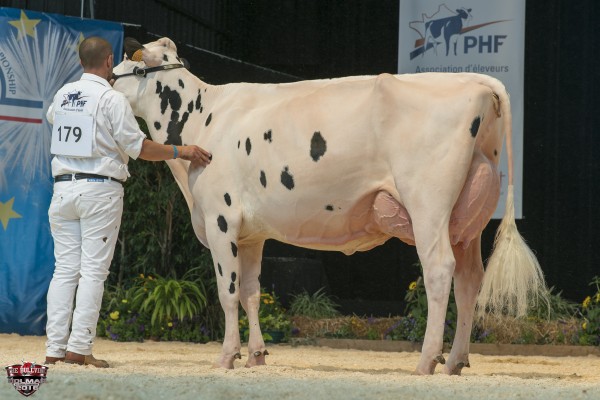
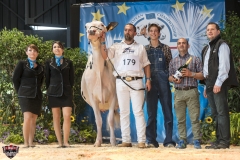
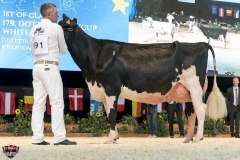
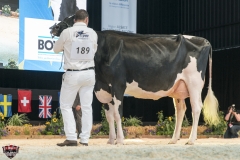
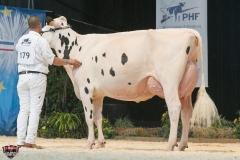
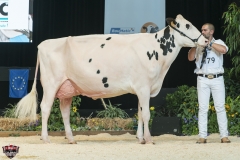
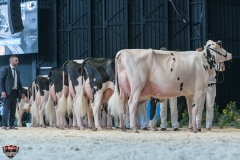
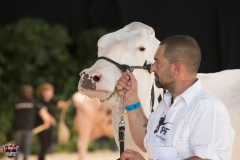
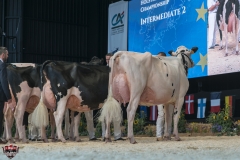
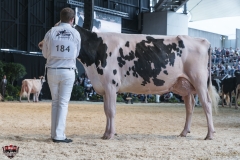
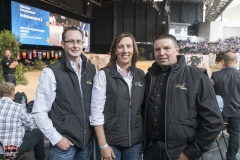
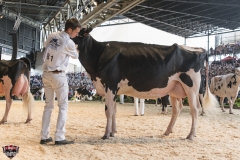
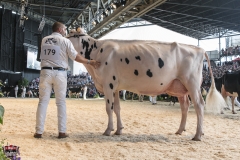
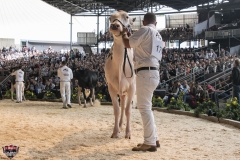
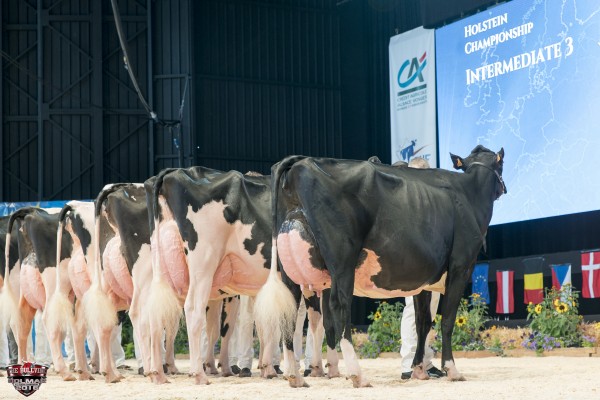
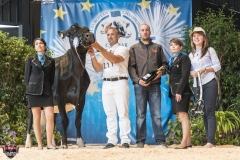
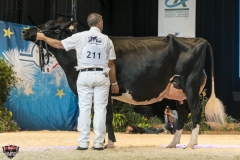
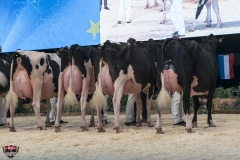
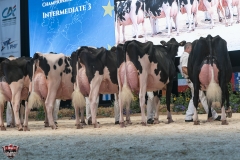
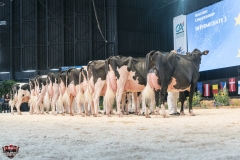
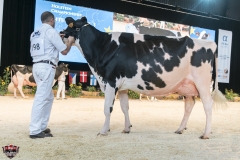
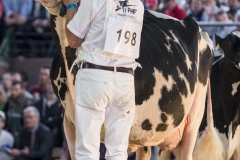
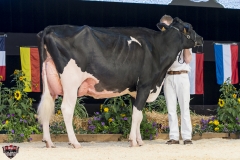
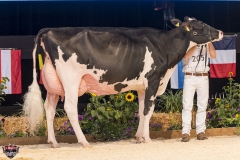
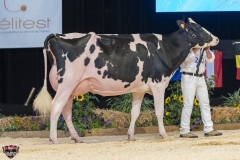
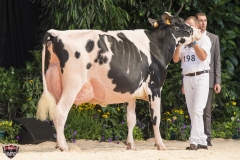
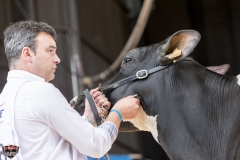
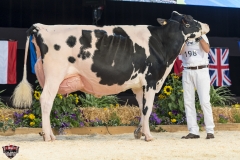
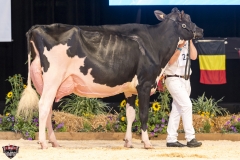
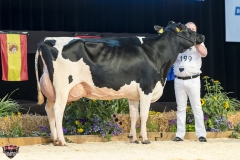
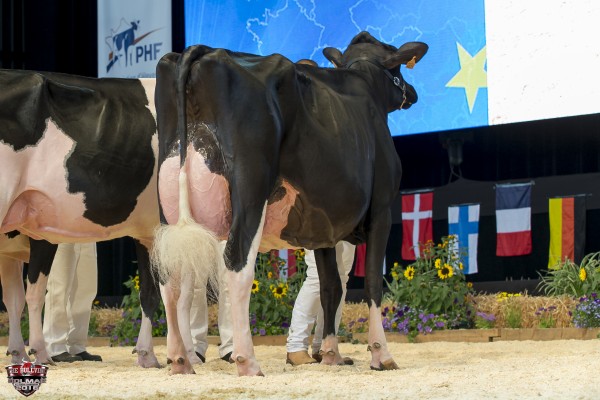
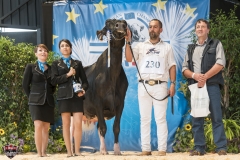
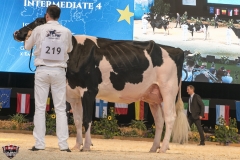
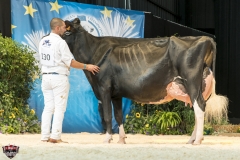
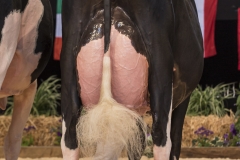
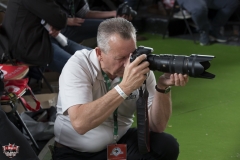
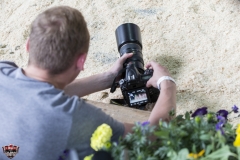
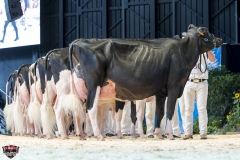
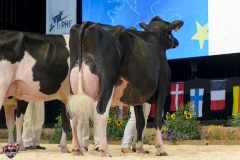
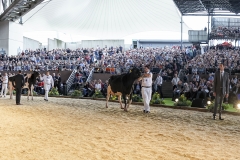
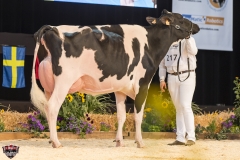
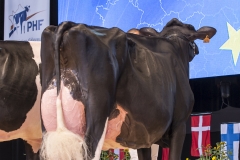
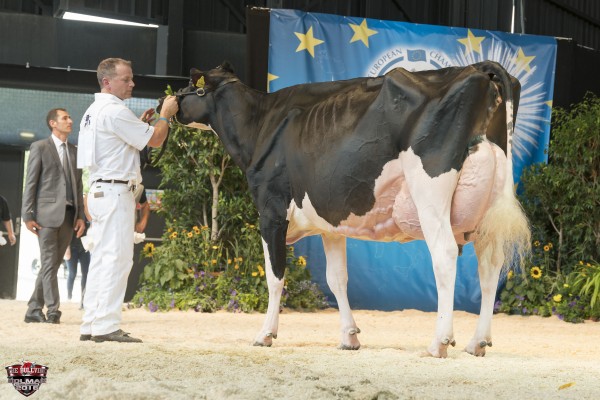
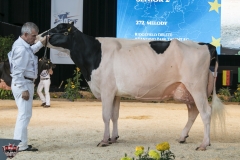
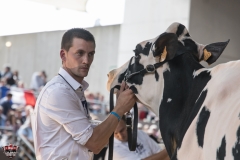
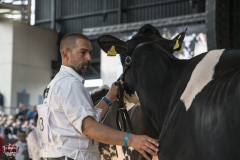
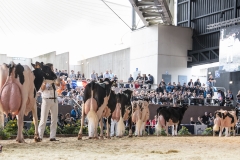
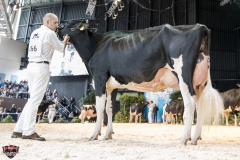
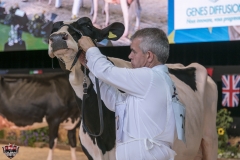
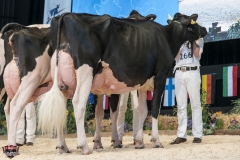
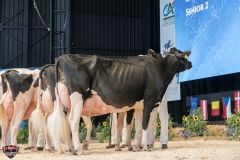
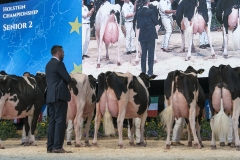
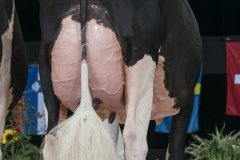
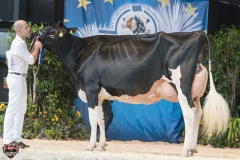
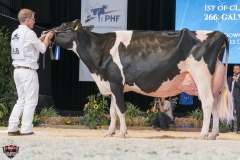
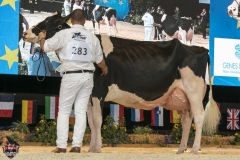
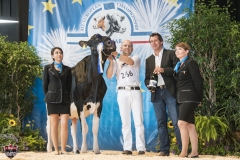
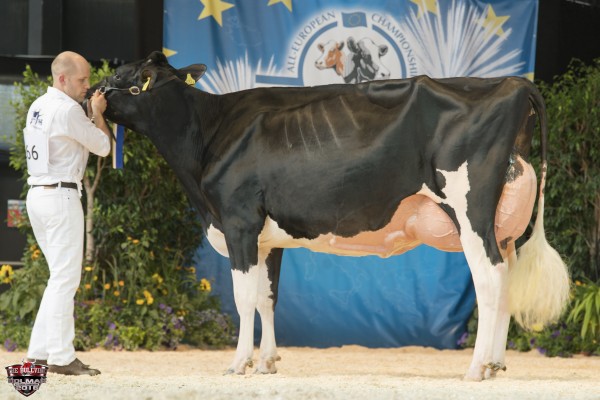














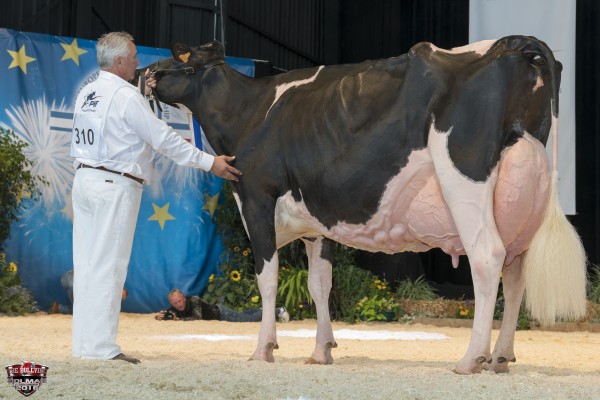
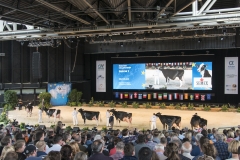

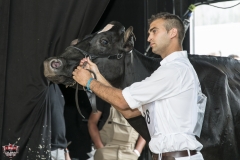
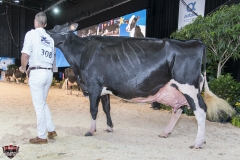
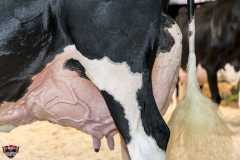
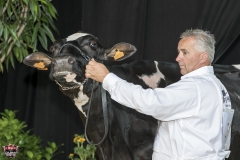
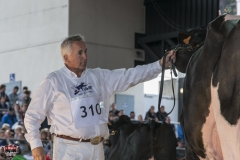
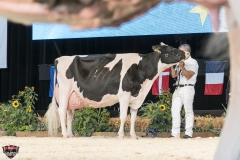
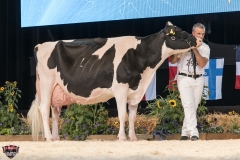
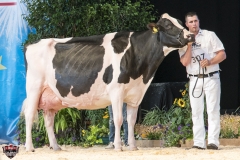
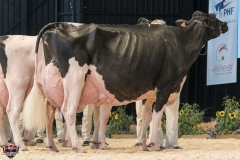
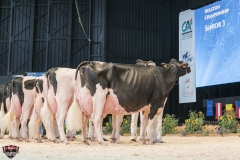
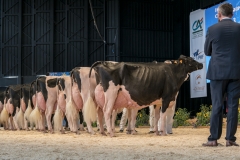
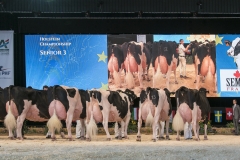
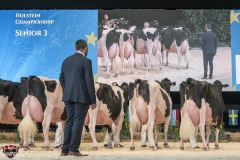
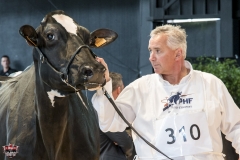
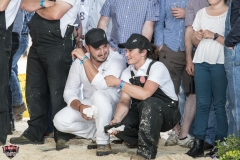
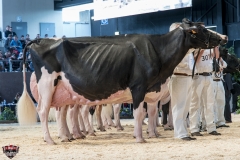
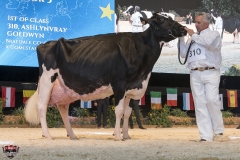
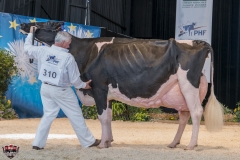
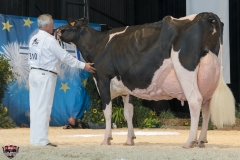
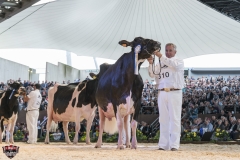
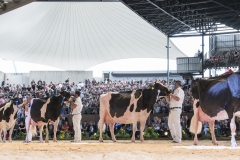
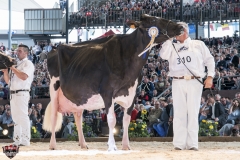
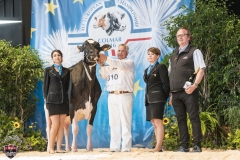
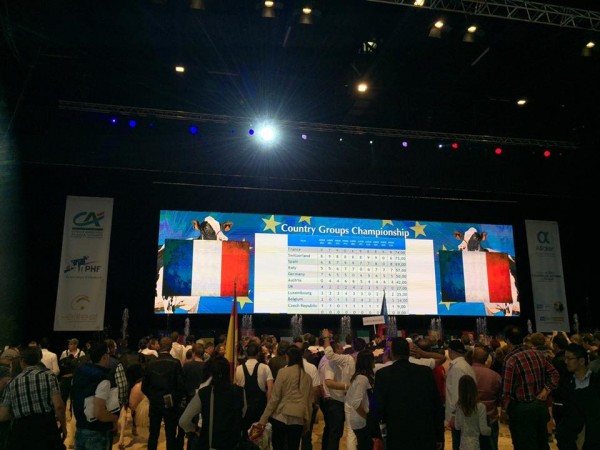
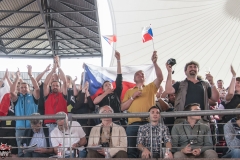
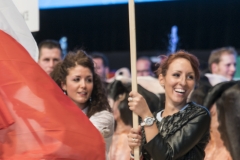
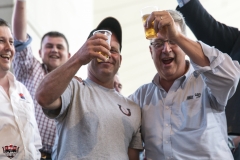

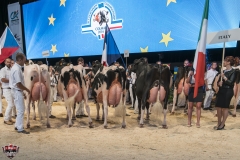
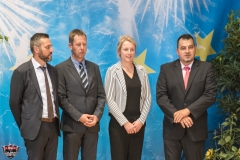
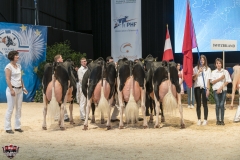
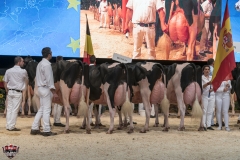
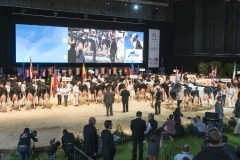
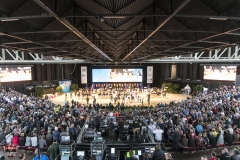
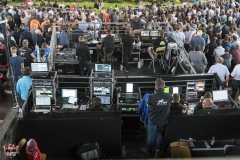
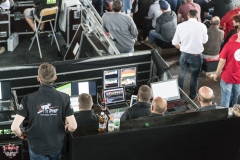
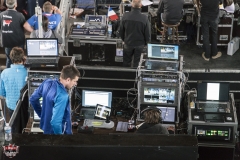
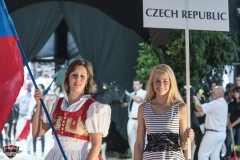
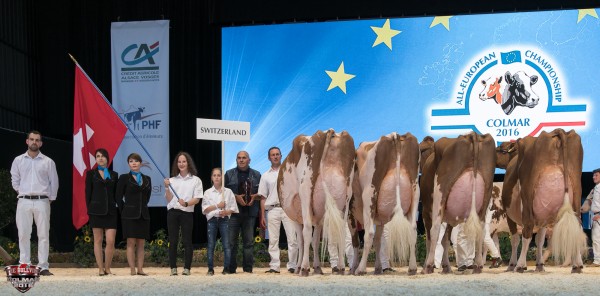
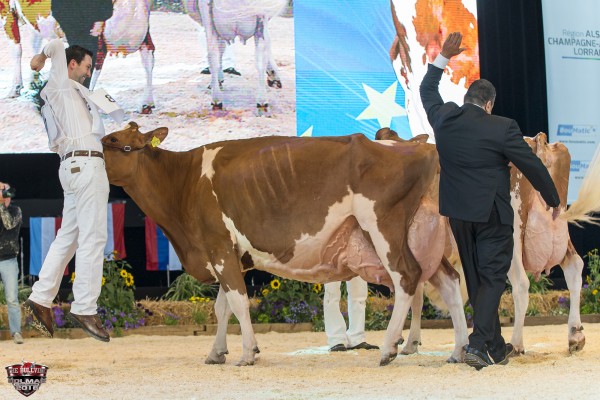
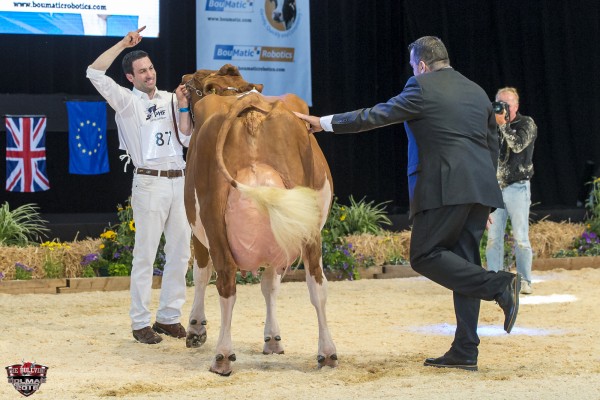
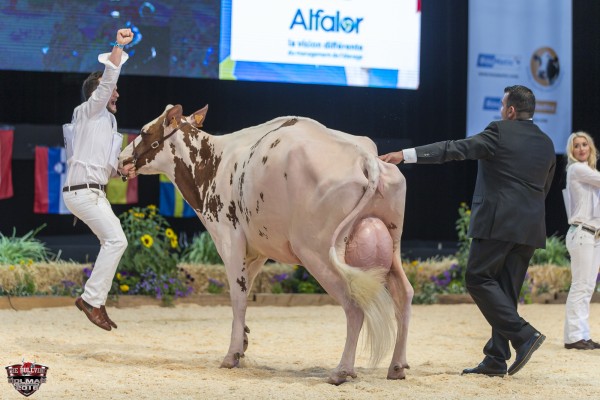
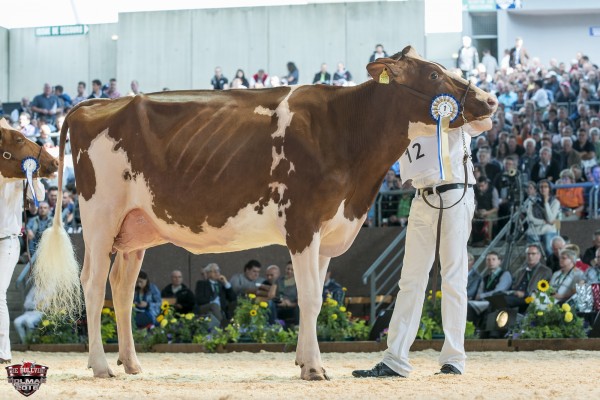
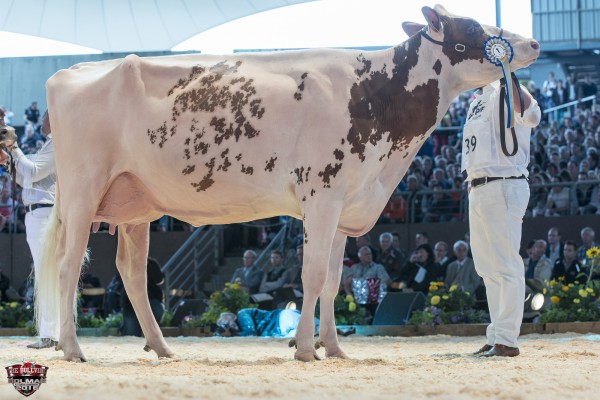
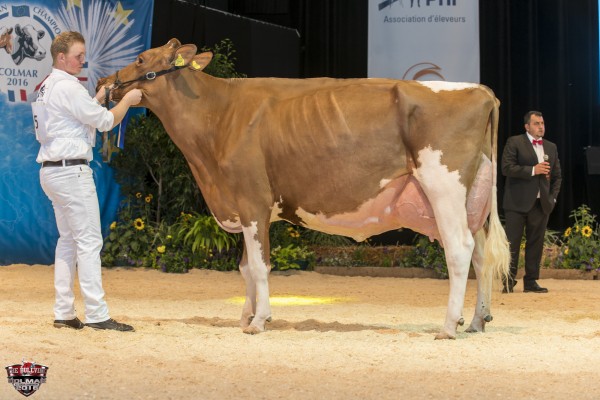
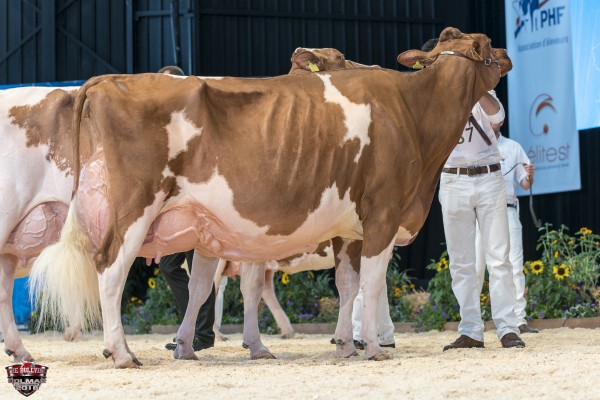
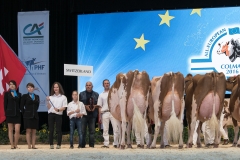
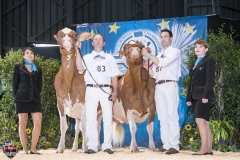
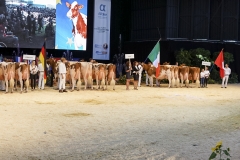
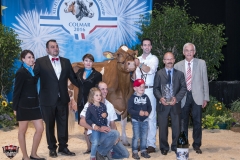
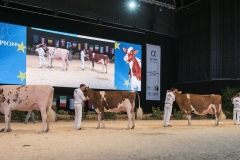
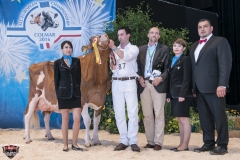
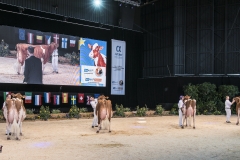
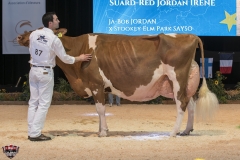
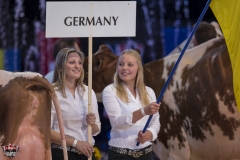
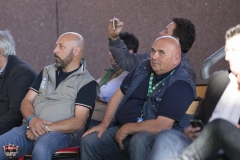
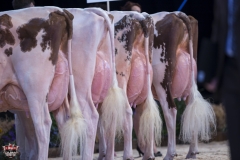
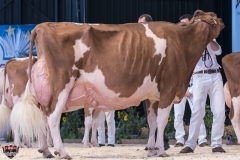
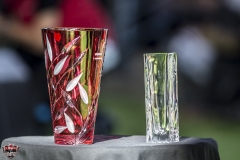
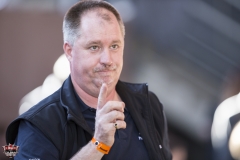
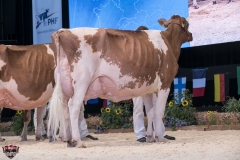
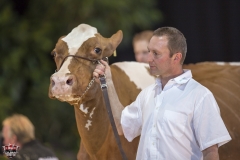
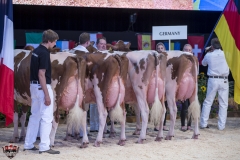
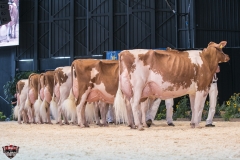
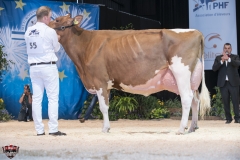
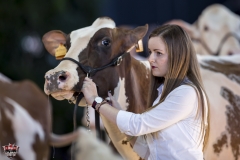
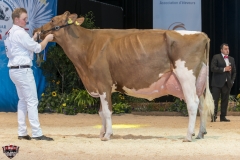
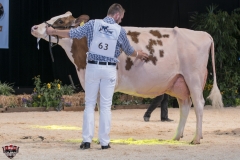
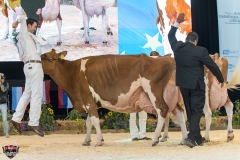
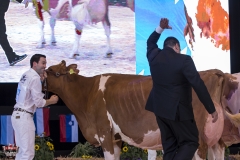
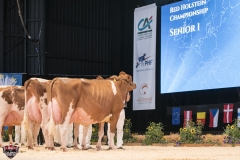
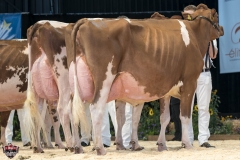
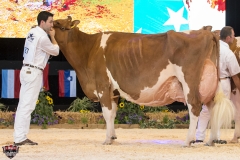

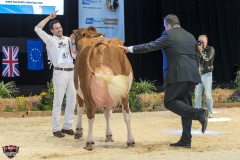
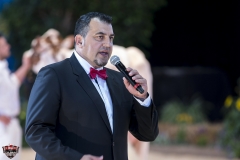
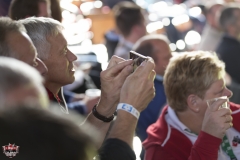

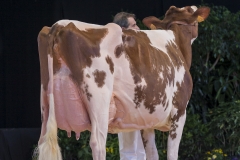
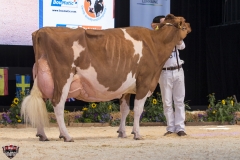
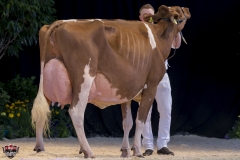

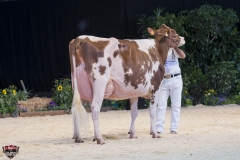
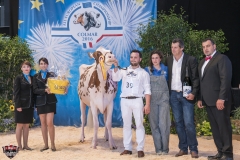
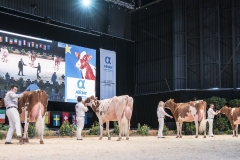
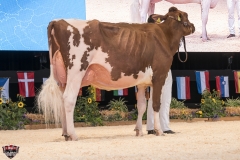
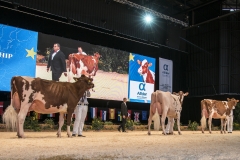
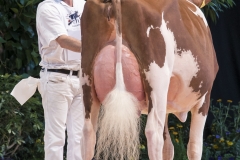
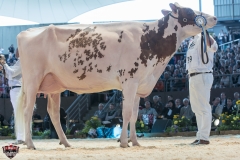
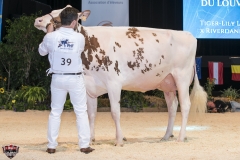
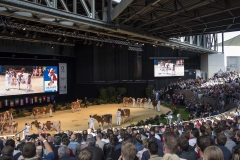
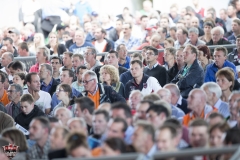
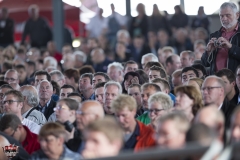
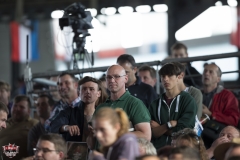

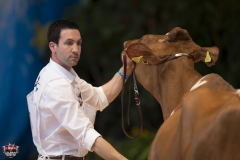
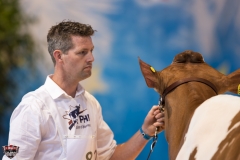
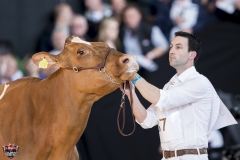
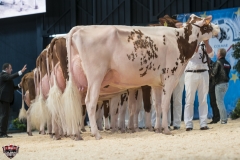
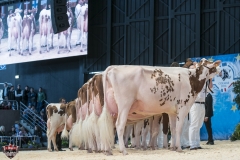
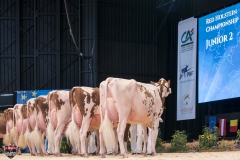
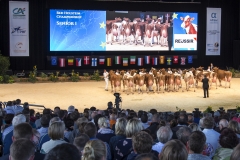
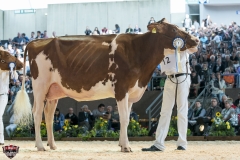
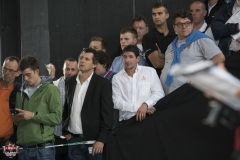
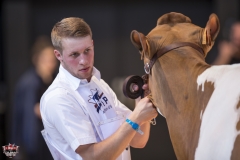
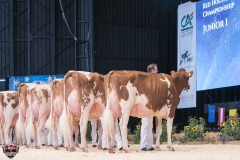
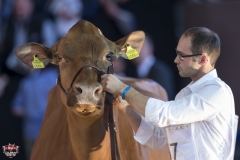
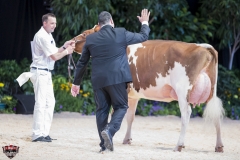
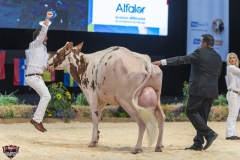
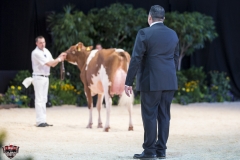
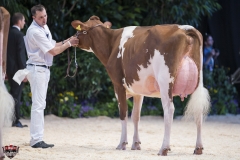
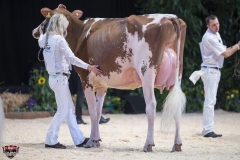
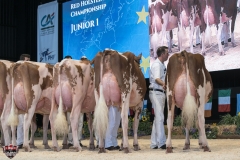
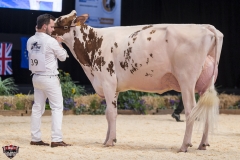
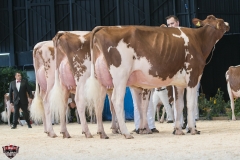
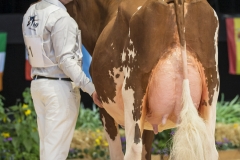
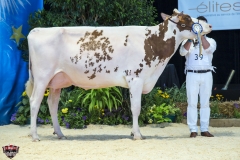
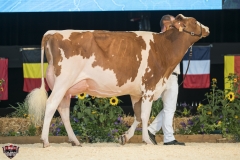
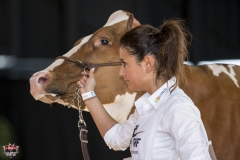
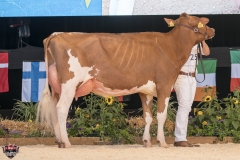
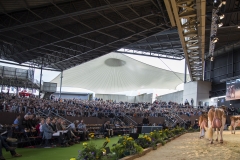
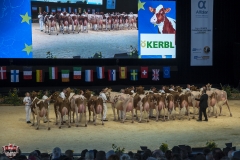
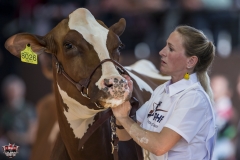
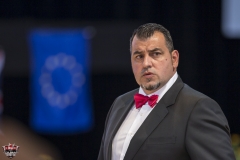
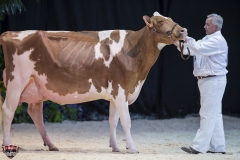
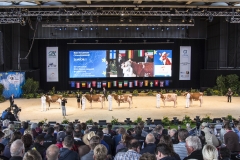
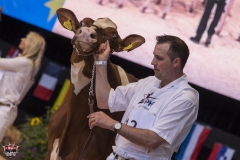
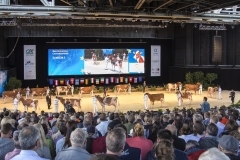
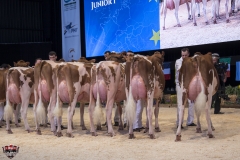
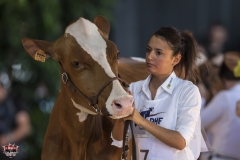
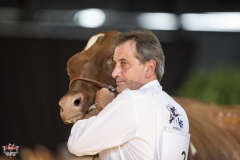
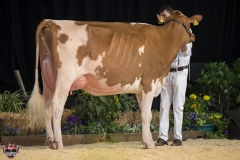
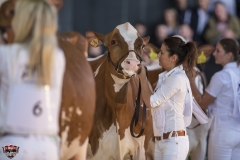
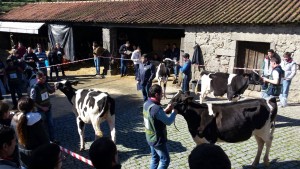
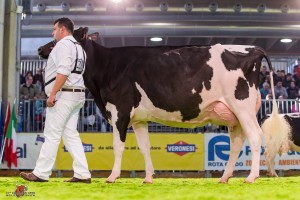 What do you think the biggest challenge will be?
What do you think the biggest challenge will be?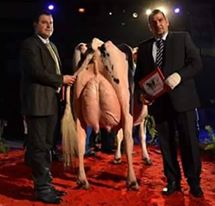 Who would you like to thank for help along your career?
Who would you like to thank for help along your career?  What advice would you give to someone who aspires to judge a major show like this one day?
What advice would you give to someone who aspires to judge a major show like this one day?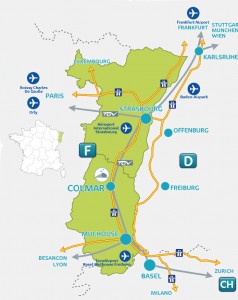 The European Championship is the most prestigious Holstein breed championship in the world. It happens every three years in one of the participating countries of the European Holstein and Red Holstein Confederation (EHRC). About 20 countries, represented by breeders, will participate in the event. This years event will take place in Colmar. Located in the heart of the Alsace region and of Europe (near the German and Swiss borders), Colmar is easily accessible from all French cities and European capitals.
The European Championship is the most prestigious Holstein breed championship in the world. It happens every three years in one of the participating countries of the European Holstein and Red Holstein Confederation (EHRC). About 20 countries, represented by breeders, will participate in the event. This years event will take place in Colmar. Located in the heart of the Alsace region and of Europe (near the German and Swiss borders), Colmar is easily accessible from all French cities and European capitals. The Location
The Location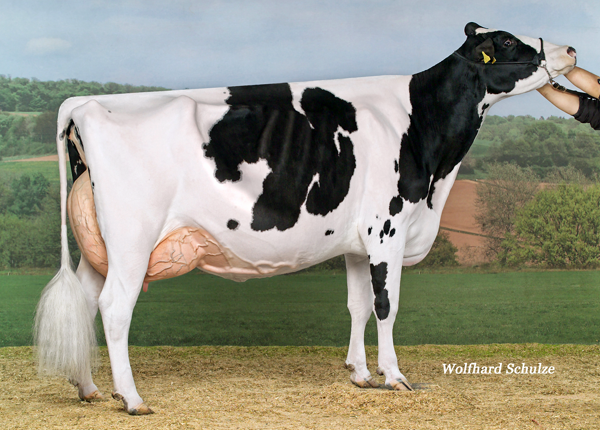
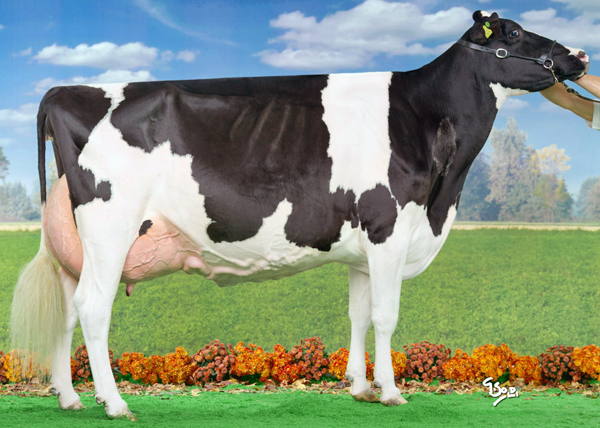
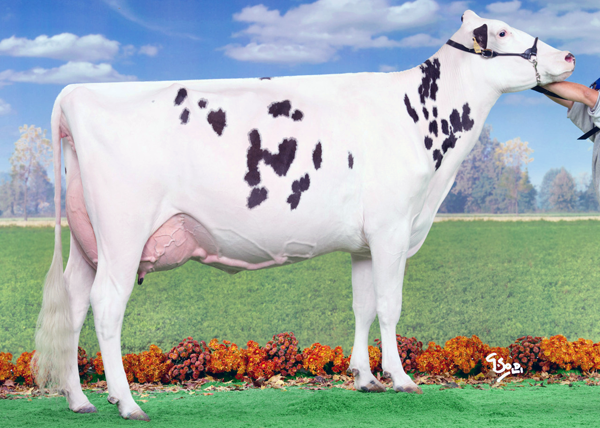
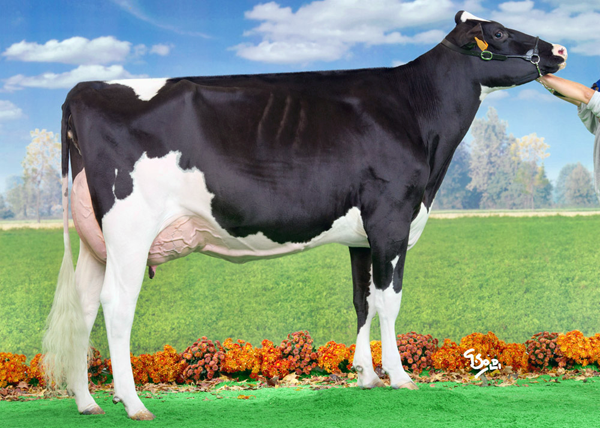
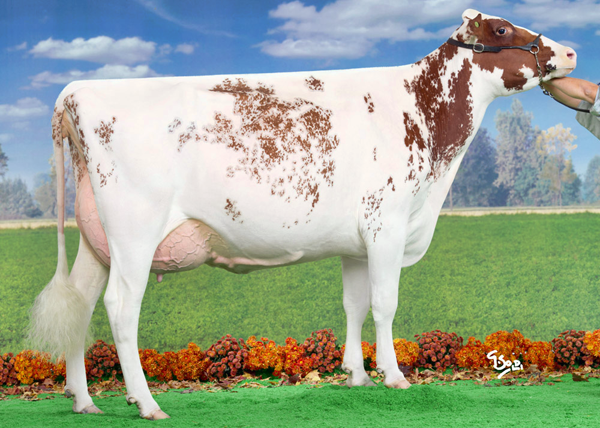
![Markus-Mock-224x300[1]](https://www.thebullvine.com/wp-content/uploads/2016/06/Markus-Mock-224x3001.jpg) Holstein judge: Markus Mock, from Germany
Holstein judge: Markus Mock, from Germany![IMG_5795-2-300x256[1]](https://www.thebullvine.com/wp-content/uploads/2016/06/IMG_5795-2-300x2561.jpg) Red Holstein judge: Jaume Serrabassa Vila, from Spain
Red Holstein judge: Jaume Serrabassa Vila, from Spain![Erica-RIJKNEVELD-216x300[1]](https://www.thebullvine.com/wp-content/uploads/2016/06/Erica-RIJKNEVELD-216x3001.jpg) Erica Rijkneveld Polsbroek lives in the Netherlands, where she is the manager of the company Livestock Show Equipment. Aged 38 years, it was during a university course in Italy she discovered contests presentation and clipping. The trigger occurs. A passion born in it will mark a turning point in his life and career. Today, this passion led him to travel all over the world as a clipper (Europe, North America). Apotheosis, she joy to pass on his expertise and experience to young European farmers through the European School of Battice (EYBS). Recognized for her experience, she quickly became clipping contest judge and presentation. The Netherlands, the United Kingdom, Ireland, Italy, Switzerland, Austria, Denmark, Slovenia, France, Spain or Germany, have already used its services to judge one of their competitions.
Erica Rijkneveld Polsbroek lives in the Netherlands, where she is the manager of the company Livestock Show Equipment. Aged 38 years, it was during a university course in Italy she discovered contests presentation and clipping. The trigger occurs. A passion born in it will mark a turning point in his life and career. Today, this passion led him to travel all over the world as a clipper (Europe, North America). Apotheosis, she joy to pass on his expertise and experience to young European farmers through the European School of Battice (EYBS). Recognized for her experience, she quickly became clipping contest judge and presentation. The Netherlands, the United Kingdom, Ireland, Italy, Switzerland, Austria, Denmark, Slovenia, France, Spain or Germany, have already used its services to judge one of their competitions.![Zsolt-K_rösi-250x300[1]](https://www.thebullvine.com/wp-content/uploads/2016/06/Zsolt-K_rösi-250x3001.jpg) Zsolt Korösi is 44 years old, married with 3 children and a graduate of the University of Agricultural Sciences Godollo (Hungary). After 4 years classifier, Zsolt was, since 2000, responsible breeding and responsible technicians for the Hungarian association of breeders of Holstein-Friesian breed. Judge in Hungary, where he officiated several times on local and regional shows, he has extended his resume at international level by integrating in 1999 the program of harmonization of the School of European judges. Germany, France (Rennes – progeny group), Slovakia or the Czech Republic have in turn received.
Zsolt Korösi is 44 years old, married with 3 children and a graduate of the University of Agricultural Sciences Godollo (Hungary). After 4 years classifier, Zsolt was, since 2000, responsible breeding and responsible technicians for the Hungarian association of breeders of Holstein-Friesian breed. Judge in Hungary, where he officiated several times on local and regional shows, he has extended his resume at international level by integrating in 1999 the program of harmonization of the School of European judges. Germany, France (Rennes – progeny group), Slovakia or the Czech Republic have in turn received.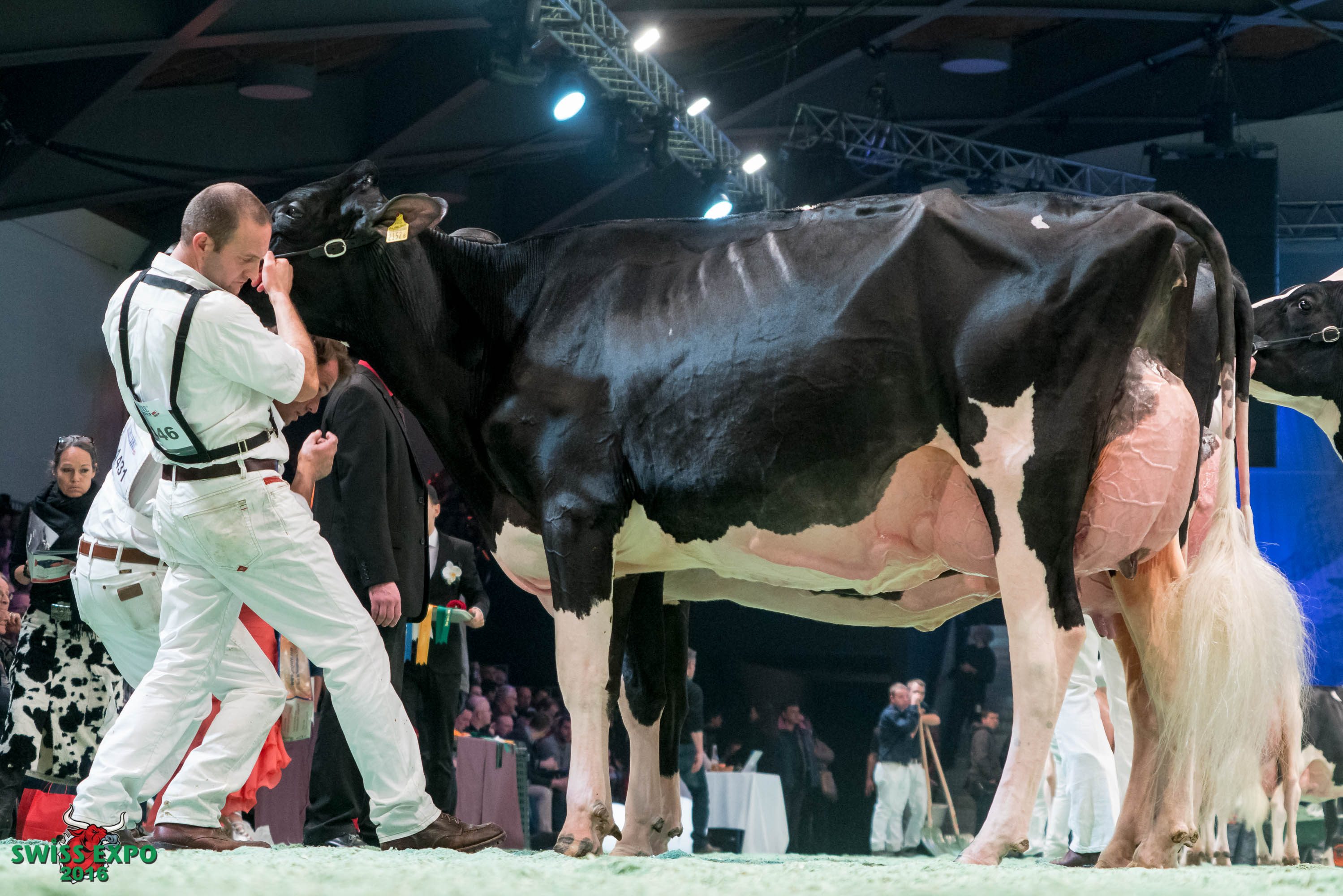
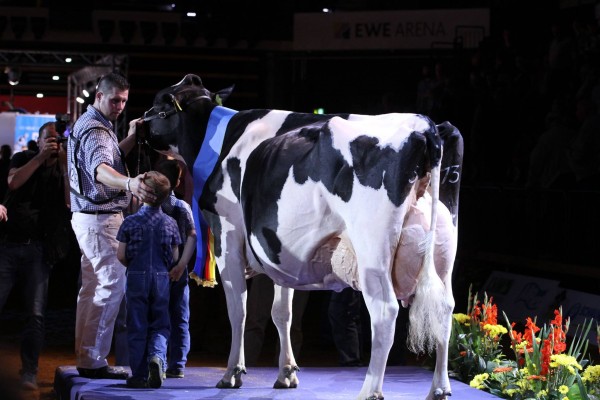
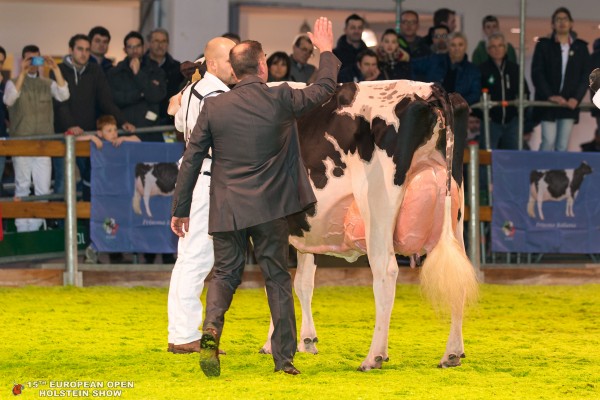
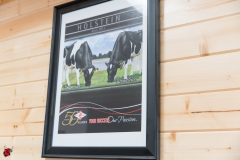
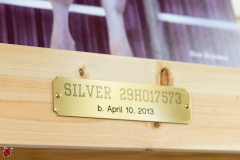
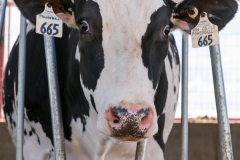
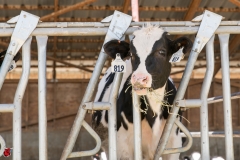
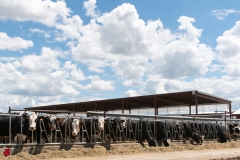
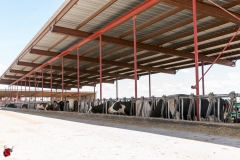
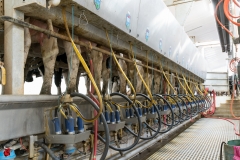
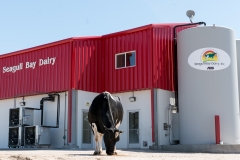
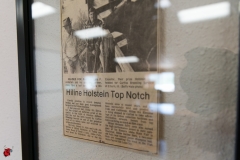
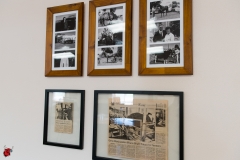
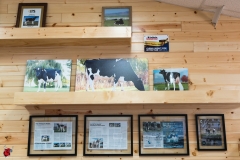
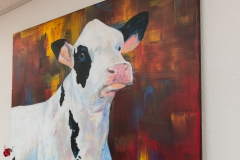
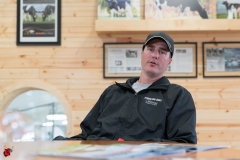
 Matt Utt is a native of Richmond, Virginia. He graduated with a B.S. in Animal and Poultry Sciences from Virginia Tech in 2000 and stayed to pursue an M.S. degree (2002) focused on estrus synchronization in beef cattle. Afterward completion of his M.S. degree, Matt worked for the University of Wisconsin-Madison conducting researching involving corpus luteum function in horses and evaluation of blood flow to the reproductive tract and pregnancy in horses and cattle. He returned to his alma mater to work as a laboratory and research specialist in 2006. In 2013, Matt was awarded a PhD from The Ohio State University following a joint graduate associateship program between Select Sires, Inc and the university during which he studied an in vitro fertilization as a predictor of bull fertility. As Director of Research at Select Sires, Matt conducts in-house research to develop new methods for semen evaluation and cryopreservation of sperm to ultimately improve fertility and/or provide a better method of bull fertility prediction. His background in female reproductive physiology and love for data analysis gives him the background work with the Select Reproductive Solutions (SRS) team on various projects. Having spent 14 years attending and/or working at universities, Matt enjoys collaborating universities worldwide for joint research endeavors.
Matt Utt is a native of Richmond, Virginia. He graduated with a B.S. in Animal and Poultry Sciences from Virginia Tech in 2000 and stayed to pursue an M.S. degree (2002) focused on estrus synchronization in beef cattle. Afterward completion of his M.S. degree, Matt worked for the University of Wisconsin-Madison conducting researching involving corpus luteum function in horses and evaluation of blood flow to the reproductive tract and pregnancy in horses and cattle. He returned to his alma mater to work as a laboratory and research specialist in 2006. In 2013, Matt was awarded a PhD from The Ohio State University following a joint graduate associateship program between Select Sires, Inc and the university during which he studied an in vitro fertilization as a predictor of bull fertility. As Director of Research at Select Sires, Matt conducts in-house research to develop new methods for semen evaluation and cryopreservation of sperm to ultimately improve fertility and/or provide a better method of bull fertility prediction. His background in female reproductive physiology and love for data analysis gives him the background work with the Select Reproductive Solutions (SRS) team on various projects. Having spent 14 years attending and/or working at universities, Matt enjoys collaborating universities worldwide for joint research endeavors.
